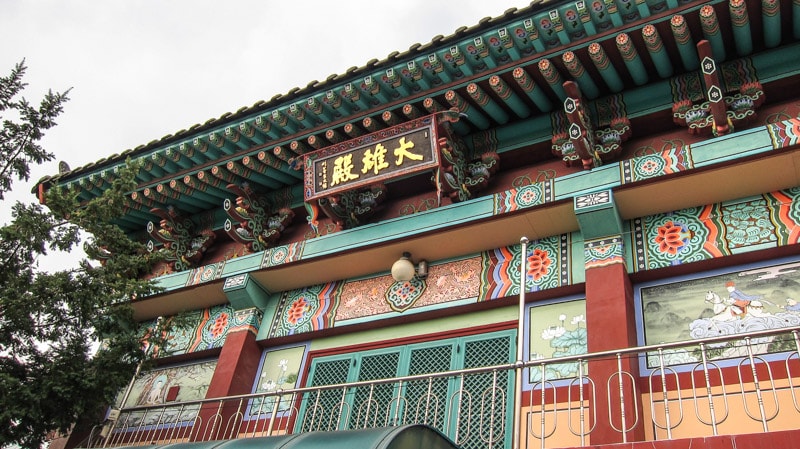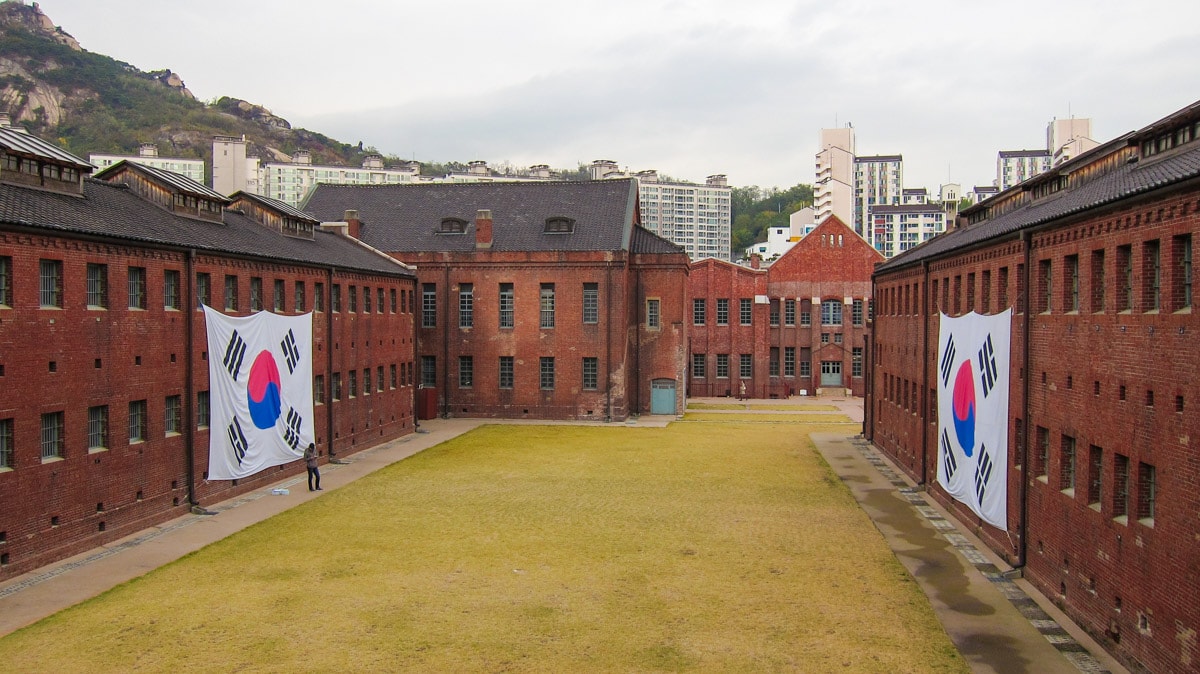
The Seodaemun Prison History Hall is a museum and memorial that honors those who suffered and gave up their lives for Korea during the Japanese occupation. The institution was used by the Japanese to house independence and pro-democracy activists. It also represents the suffering of the Korean people as they struggled to archive independence and democracy.
Many people gave up their lives here for their country. This prison hall is a memorial and a stark reminder of those sacrifices.
Construction on the prison started in 1907 during the last years of the Great Korean Empire or Daehan Empire. When completed on October 21, 1908, it was known as Gyeongseong Gamok (Gyeongseong Prison). The name was changed to Seodaemun Gamok on September 3, 1912. The name was changed again on May 5, 1923 to Seodaemun Prison (Hyeongmuso).
On August 29, 1910, the Great Korean Empire was colonized by the Japanese.
For many decades, activists fought against the injustice of the Japanese occupation. Though brave, their numbers were too few to threaten Japan’s imperialistic and brutal rule. The Japanese attempted a cultural genocide on the Korean people including making them learn and only speak Japanese, making them pray to the gods of Japan, and making them adopt Japanese names.
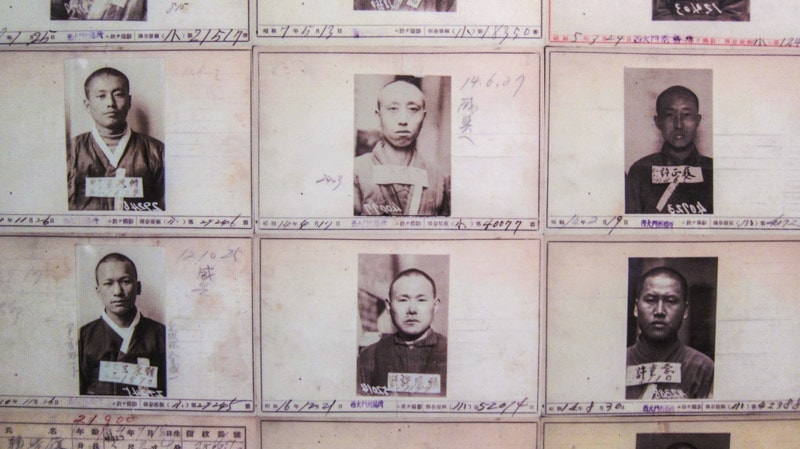
When opened, the prison covered 1,600 square meters (17,222 square feet) and was designed to house some 500 prisoners and Korean independence fighters. At the height of the anti-Japanese movement around March 1919, the prison packed in up to 3,000 people. By the 1930s, the prison was expanded approximately 30 times due to the increase of incarcerated Korean independence activists.
In total, about 40,000 freedom fighters passed through the front gate of the prison. Of those, about 400 were executed or died from other reasons while incarcerated here. The Japanese continues executing and torturing inmates until liberation in 1945.
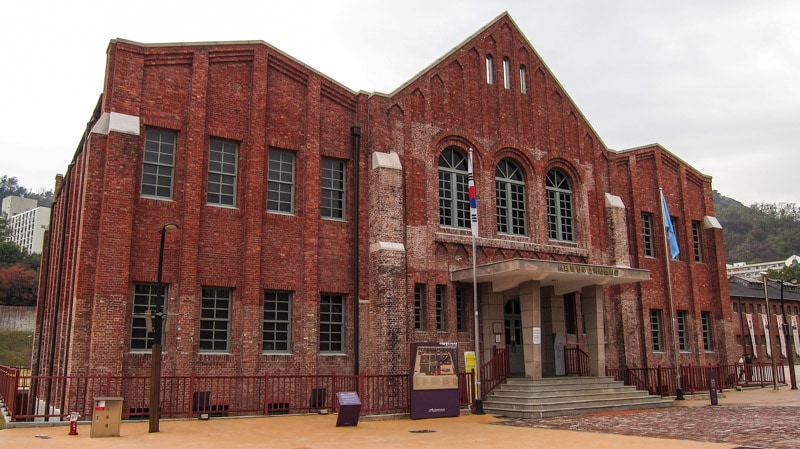
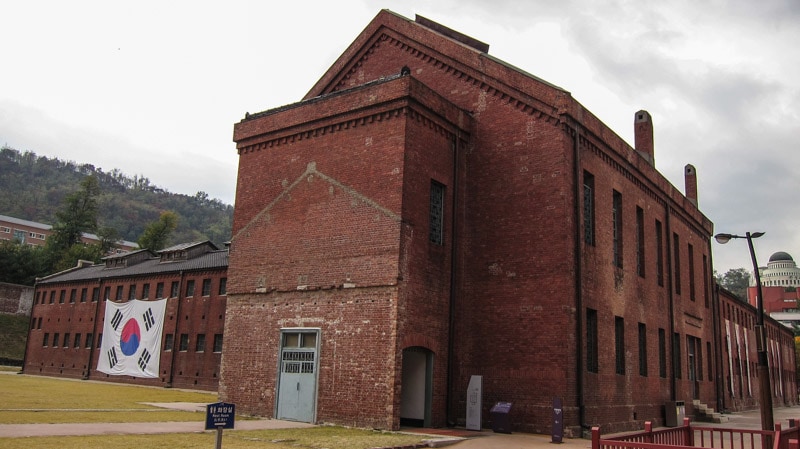
One of the most well known prisoners who was executed here was Ryu Gwansun. In 1919, Ryu was a student at Ewha Womans University, a university in western Seoul.
Ryu was one of the first organizers of the anti-Japanese movement known today as the March 1st Movement. She planned a demonstration against the Japanese occupation on March 1, 1919 with over 2,000 demonstrators. Japanese police quickly arrested Ryu and later sentenced her to seven years at Seodaemun Prison.
While in prison, Ryu continued to protest the occupation of Korea and for independence. Not surprisingly, she received constant beatings and was even torture by Japanese guards. She was often placed in solitary confinement cells that were no larger than 3.3 square meters (36 square feet). These cells had no electricity, no toilets, and no sunlight. It was in these cells were inmates were tortured.
She died here on September 28, 1920.
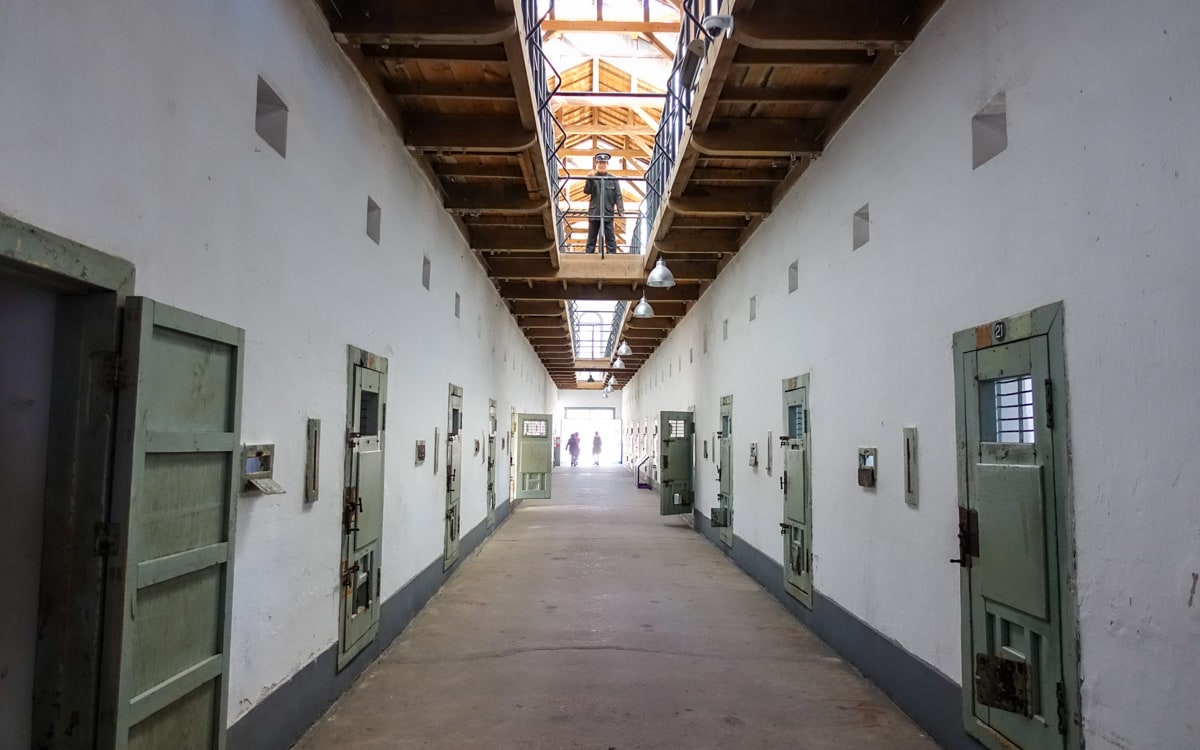
Korea was liberated on August 15, 1945, also known as Victory over Japan Day.
The prison has changed names multiple times since liberation including Seoul Hyeongmuso (November 21, 1945), Seoul Gyodoso (December 23, 1961), and Seoul Guchiso (July 7, 1967).
Seodaemun Prison operated as a prison for eight decades from 1908 to 1987.
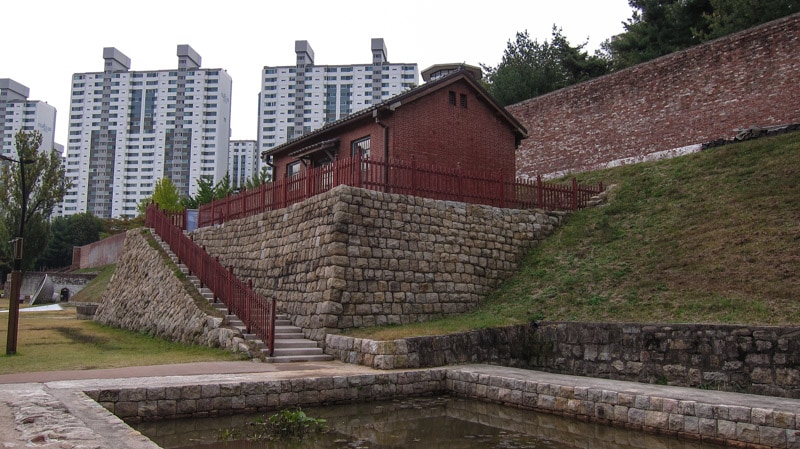
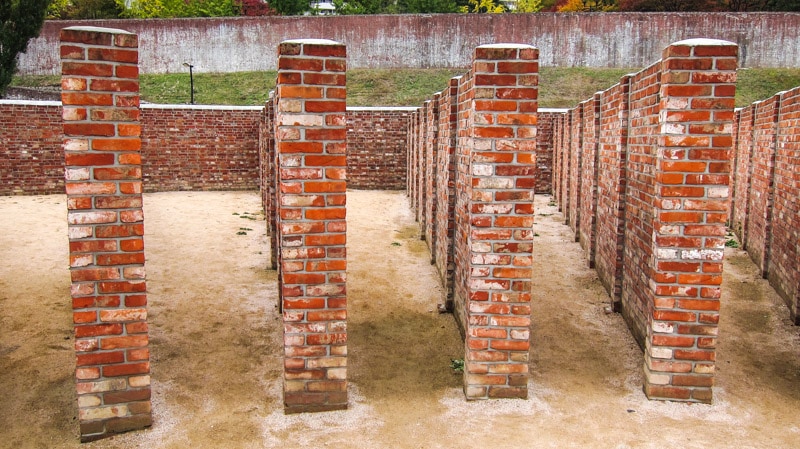
On August 15 1992, the prison site was unveiled to the public as the Seodaemun Independence Park.
In 1995, the park was renovated and the Seodaemun Prison History Hall was opened.
Seven of the prison’s original fifteen buildings still stand today and have been designated historical monuments (No. 10, No. 11, No. 12, and the execution building).
Today, the memorial pays tribute to those who gave up their lives and serves as a reminder for future generations of the brutal history which occurred here for independence.
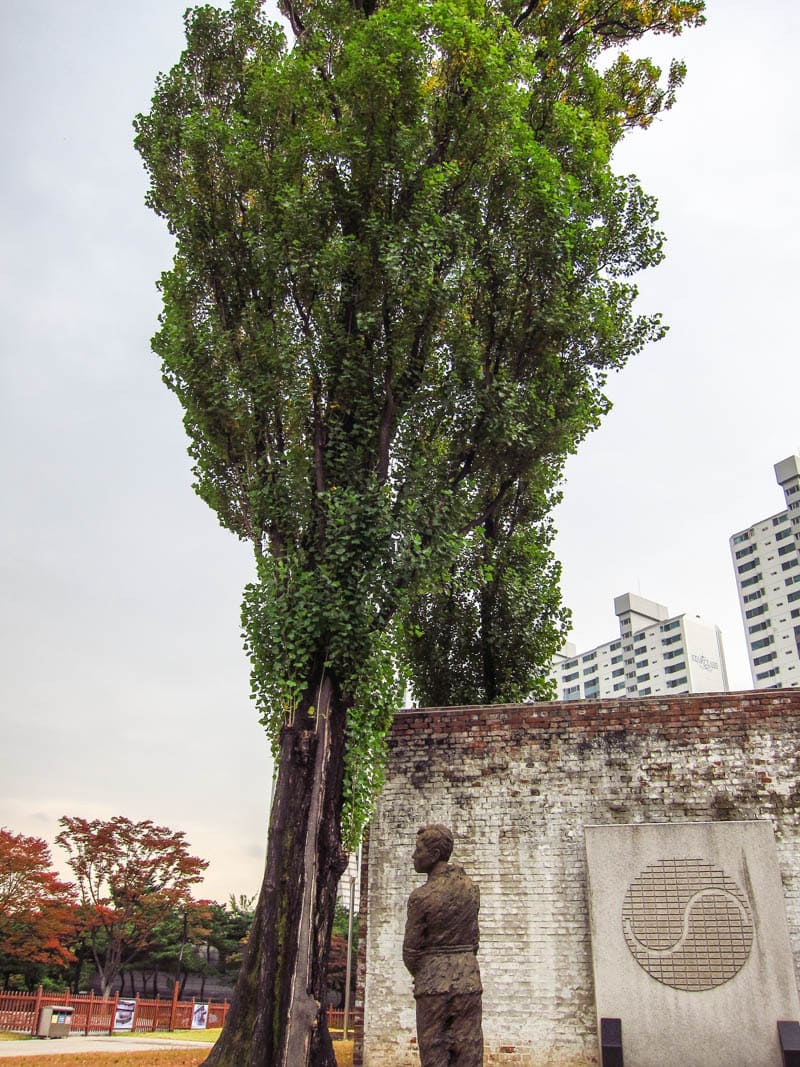
What to see at Seodaemun Prison History Hall
Execution Building
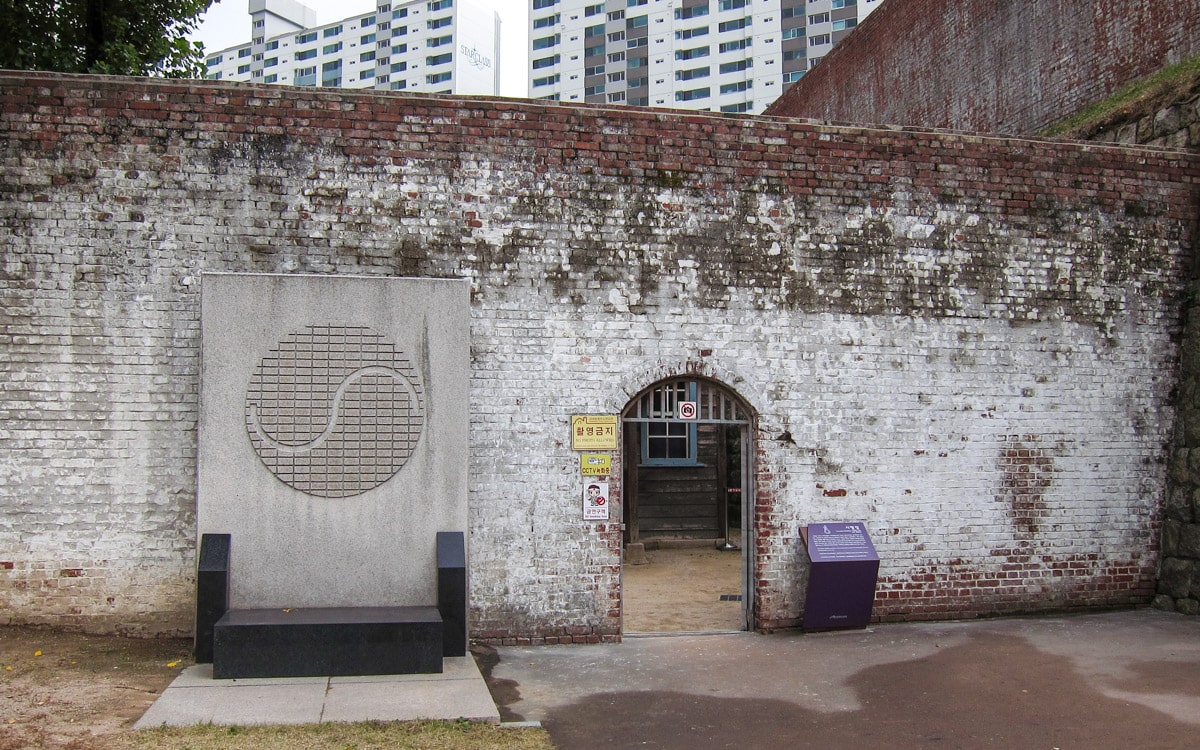
The wooden building behind this wall was the execution building of patriots and activists at Seodaemun Prison. Many activists and patriots of Korea who struggled and suffered for the independence of Korea from Japan were sent here. They gave up their lives in the building for the love of their country.
The structure was built in 1923.
After being executed, the Japanese would dispose of the body using a secret tunnel known as the corpse removal exit.
Corpse Removal Exit
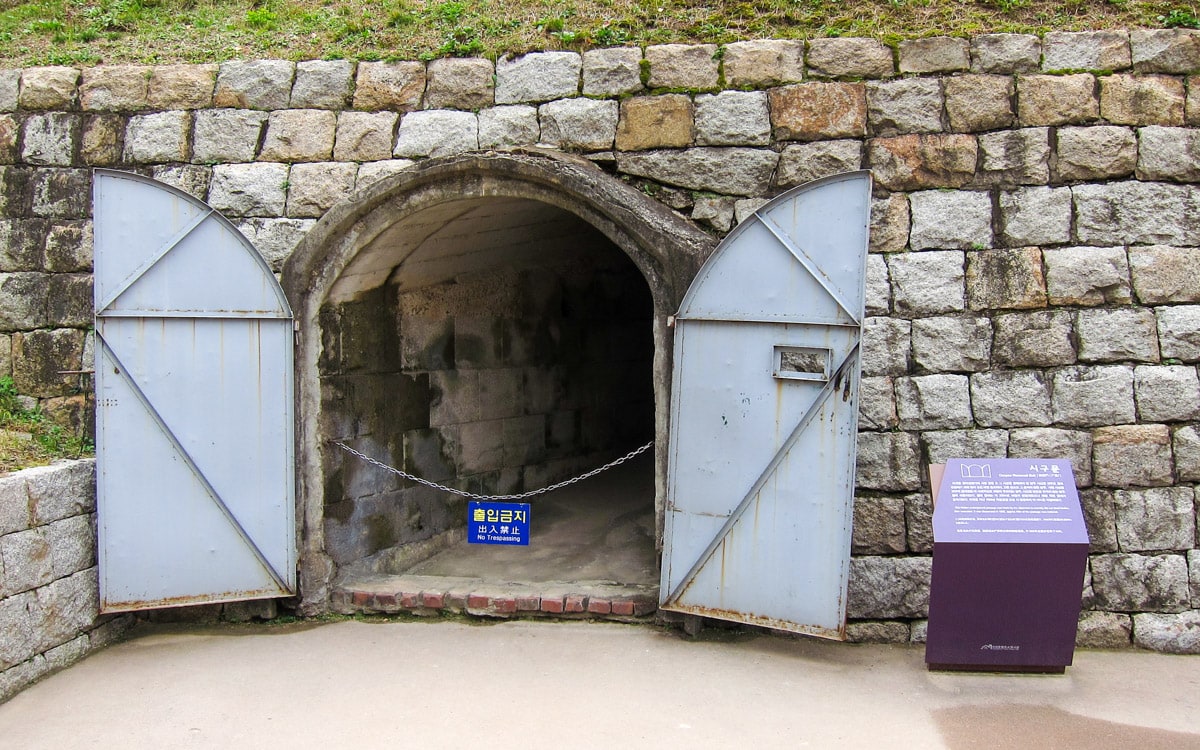
The corpses removal exit is a secret tunnel used by the Japanese to discretely dispose of activists after being executed at the nearby execution building. It was here were the dead bodies of independence activists were disposed. Japanese imperialists used this tunnel to conceal their activities.
The tunnel was discovered in 1992. Approximately 40 meters (131 feet) of the secret exit and tunnel were resorted.
Reverence Monument
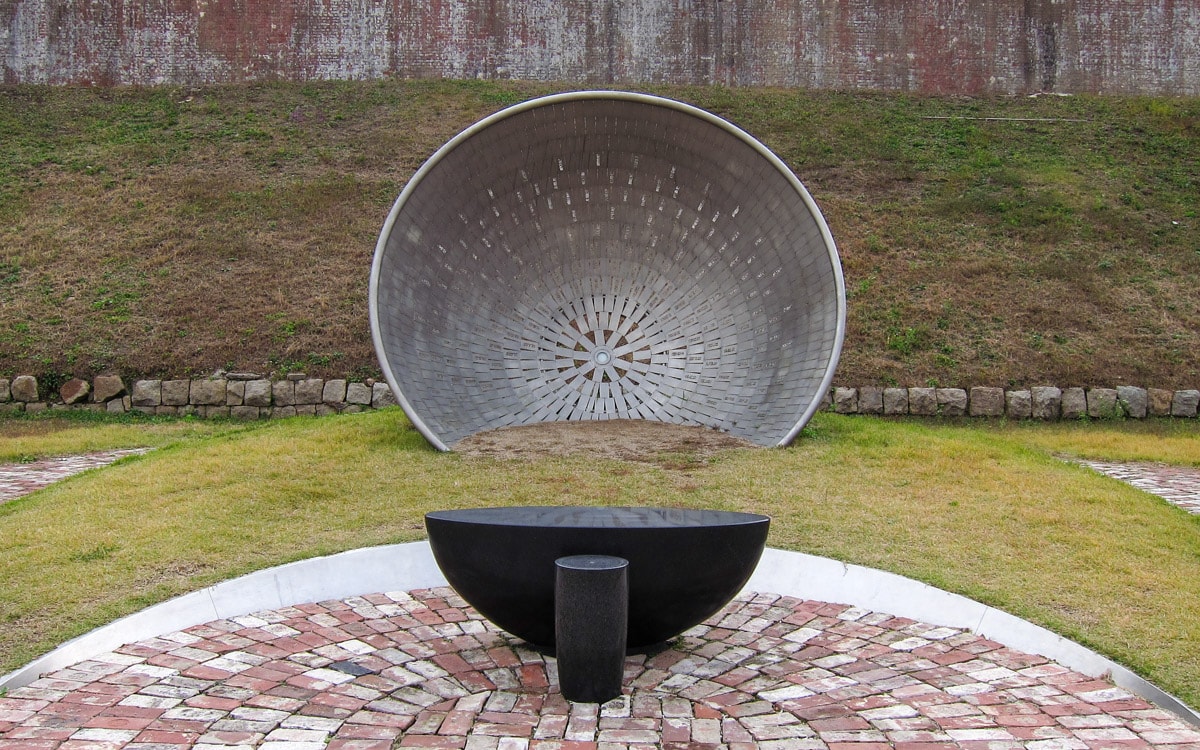
The Reverence Monument by Lim Seung-O, known as Pot with the Soul of Nation, is dedicated to those who gave up their lives for the independence of Korea.
The monument has the names of those independent activists who sacrificed their lives for their country while imprisoned at Seodaemun Prison History Hall.
Seodaemun Prison History Hall Information
Hours
March - October: 9:30 AM - 6:00 PM
November - February: 9:30 AM - 5:00 PM
Last admission: 30 minutes before closing.
Closed on: Mondays, January 1st, Seollal (Lunar New Year), and Chuseok (Korean Thanksgiving).
Admission
Adults (Age 19-64): 3,500 won
Teenagers (Age 13-18): 1,500 won
Children (Age 7-12): 1,000 won
Senior Citizens (Age 65+): Free
Child (Age 6 or under): Free
Address
251 Tongil-ro, Seodaemun-gu, Seoul, South Korea
GPS Coordinates: 37.574421,126.956248
How to Get Here
Take Subway Line 3 to Dongnimmun Station (Exit 5)
Seodaemun Prison History Hall Video
Map
Official Website
Additional Resources
Klook
Klook offers discounted tickets and reservations for various attractions and services in Seoul, from theme parks and museums to tours and transportation options.
Viator by TripAdvisor
Viator is a popular online platform that helps travelers book tours, activities, and unique experiences worldwide, including in Seoul. It connects users with a wide selection of options – from sightseeing tours to cultural events and outdoor adventures – all offered by local providers.
Rakuten
Save money while exploring Seoul with Rakuten's cashback program. Book your hotels or other services through Rakuten and enjoy cashback rewards and exclusive deals.
If you sign up using the link below, you could earn $30 cashback on your first purchase over $30.
Book Recommendations
For an immersive guide to Seoul, many travelers choose to bring a book along. Fodor's Seoul, for example, offers detailed recommendations on sights, restaurants, maps, and travel tips.
Nearby Sights
Dongnimmun Gate (Independence Gate)
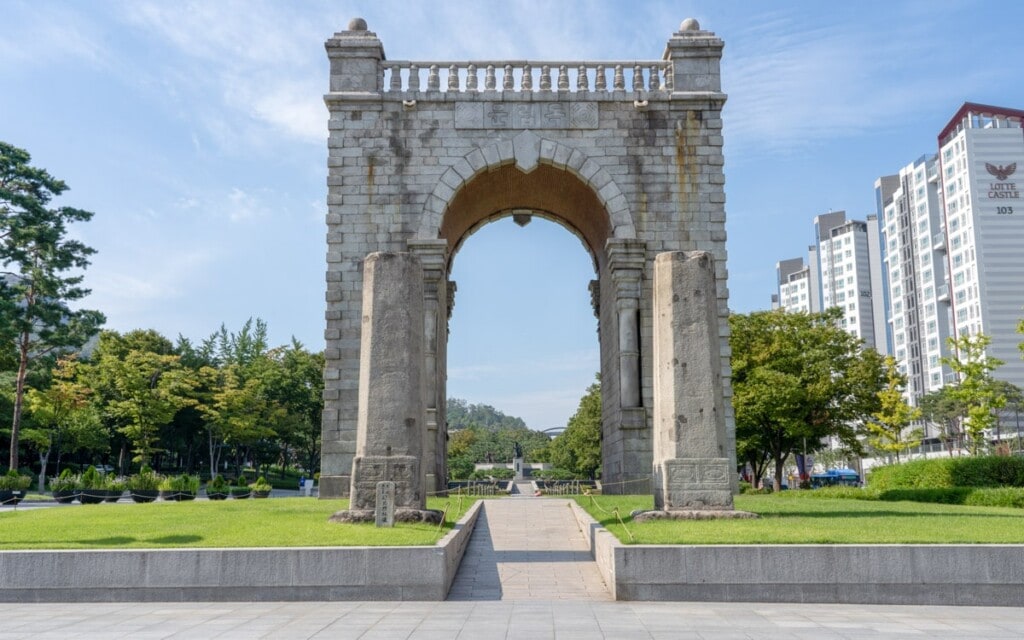
Dongnimmun Gate (Independence Gate) is a memorial built to honor the Korean people and their fight for national independence over foreign intervention. The gate is located in the southeastern corner of Seodaemun Independence Park near Seodaemun Prison History Hall. A gate known as Yeongeunmun once stood at this location. It was here where Chinese and other foreign envoys were received and greeted.
Guksadang Shrine
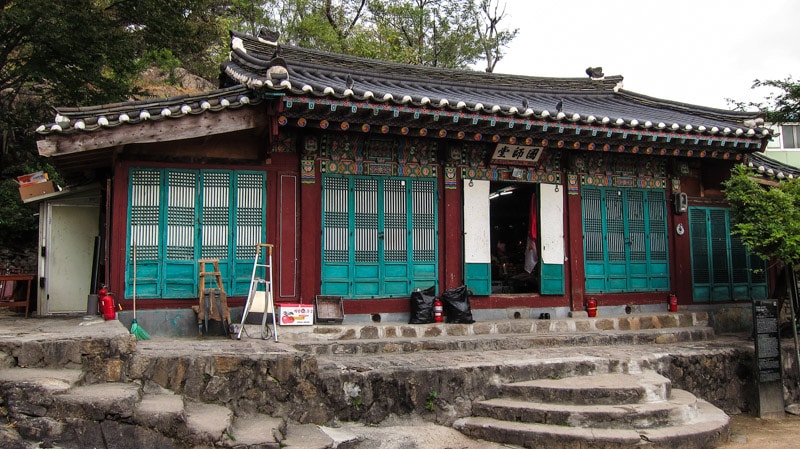
Guksadang Shrine, on Mt. Inwangsan, is one of the most important and almost mythical Shamanic shrines in Korea that at a time was used for exorcisms. Shamanism is a religion with beliefs in unseen worlds of gods, demons, and spirits. Shamans believe in 12 deities which are the spirit of the mountain, the spirit of the dragon king, the spirit of three monks, and spirit of seven stars.
Yeongcheon Market
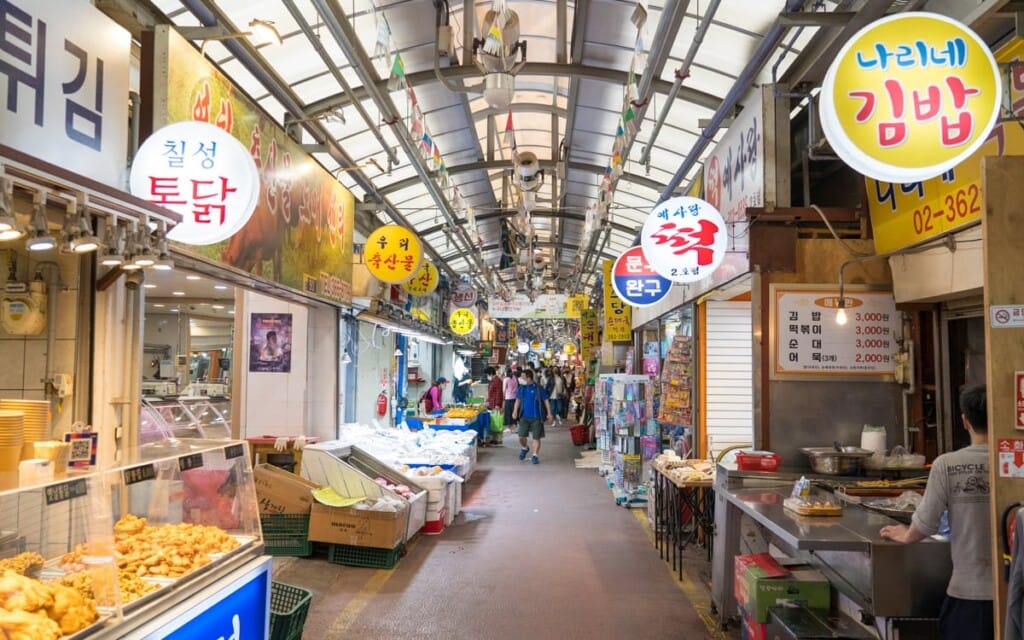
Yeongcheon Market is a small traditional market located between Seodaemun Station and Dongnimmun Station in Seodaemun-gu. Established in the 1960s, this single alley covered market with about 130 stores is popular for its street foods, fresh produce, fruits, meats, seafood, toys, shoes, and more. Although it is not large in size, Yeongcheon Market features a wide variety of items sold at affordable prices. As you walk down the 250 meter (820 foot) alley, you might notice how many of the stores sell similar items whether it's vegetables, meat, garlic, seafood, dried peppers, or spices.
Bongwonsa Temple
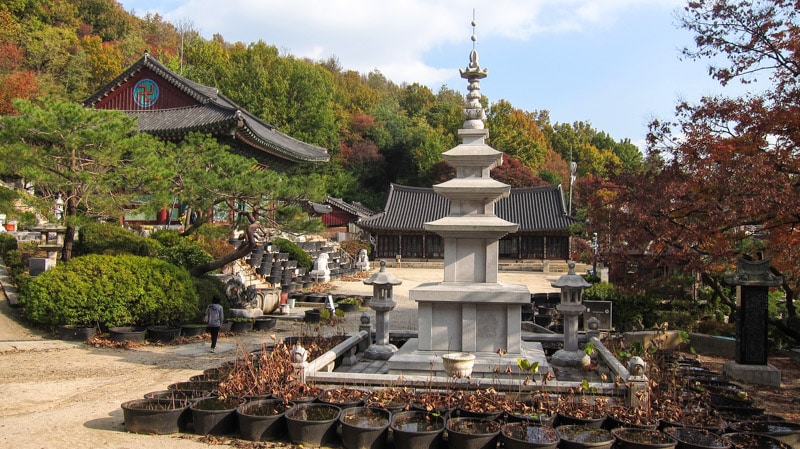
Bongwonsa Temple is a Buddhist temple dating back 1,000 years located at the foot of Ansan Mountain in Bongwon-dong. The temple was known as Banyasa when founded by Master Dosun in 889. It was originally located on the grounds of modern day Yonsei University. In 1592, during the Japanese invasion of Korea, the temple was destroyed, like many other buildings during this period.
Sajik Park
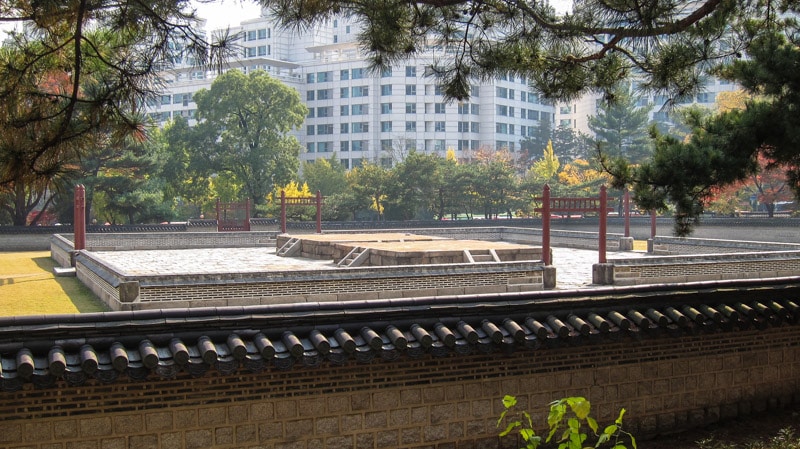
Sajik Park is a park located near the Central Government Complex on the hills of Mt. Inwang. Rites to the deities of earth and grains are performed here. It was here where sacrifices and ceremonies were performed in honor of the deities of the earth and the deities of the grains.
Last Updated on Mar 14, 2025
